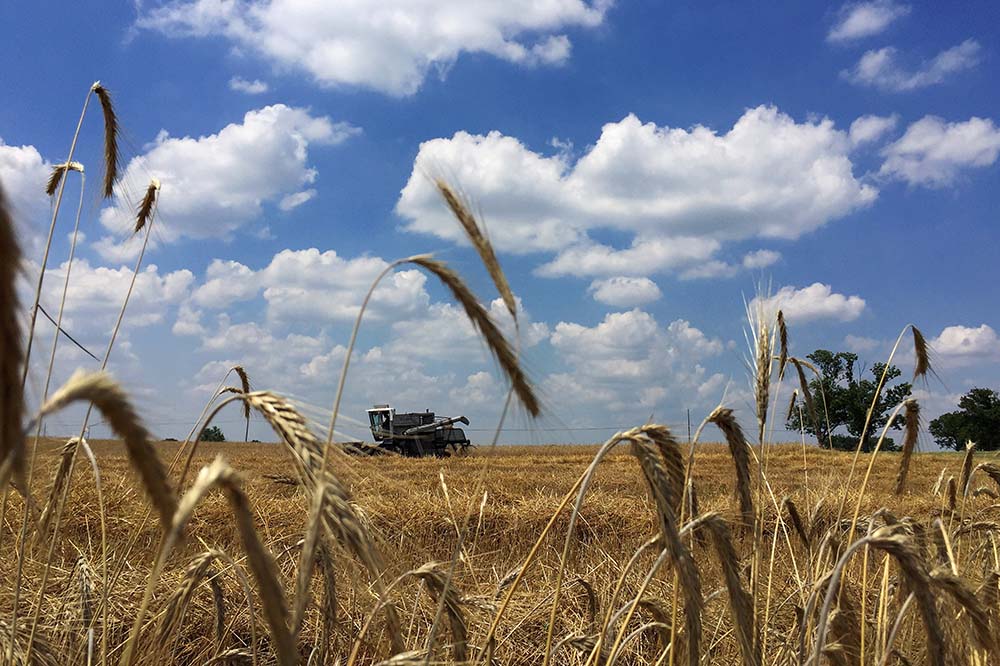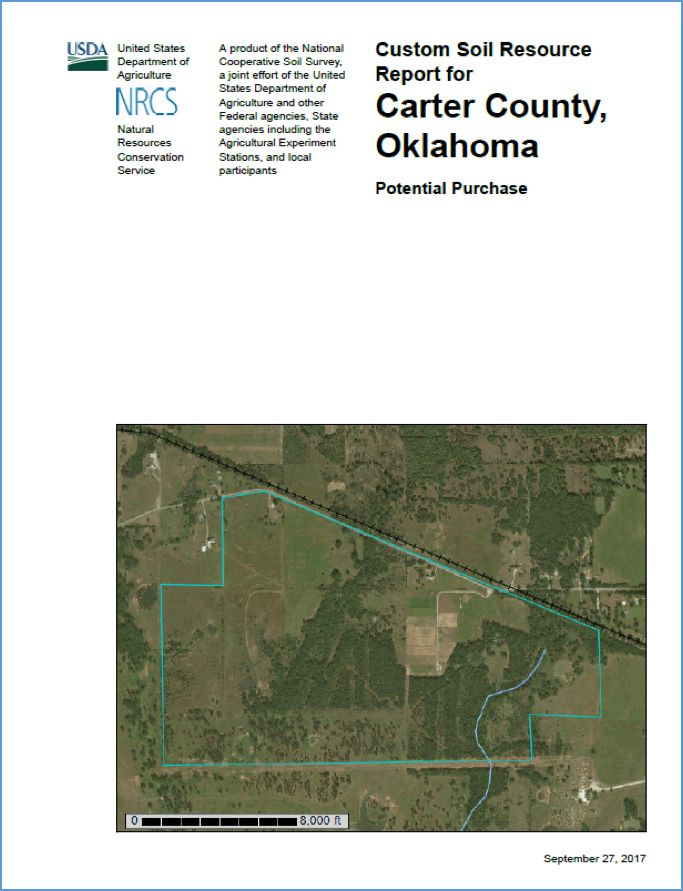If you are thinking about buying a piece of property with crop or forage production as a significant goal, the following questions can help you decide if the property will work for you.
Is the terrain suitable?
Relatively level and open fields are desirable for crops or hay production. Excessive hills or sloping terrain increases erosion risk, particularly for clean-tilled crops. Erosion risks can be somewhat mitigated by adopting reduced, strip-till or no-till systems that maintain surface residue cover. Installing terraces, or farming on contours, can also reduce erosion risk. If the terrain is hilly or sloping, it is likely better suited for permanent grass pasture. While too much slope causes erosion problems, absolutely flat fields are not desirable either. Some grade is needed to allow water to run off after heavy rainfall events.

Are the soil types suitable?
Different crop and forage species are better adapted to different soil types. While deep, well-drained soils are the most productive for most crops and forages, there is something that is adapted to about every soil type. An excellent tool for evaluating soils on a particular property is the Web Soil Survey. This is a free service from the USDA Natural Resources Conservation Service that has soils data on virtually every location in the United States. Customized reports can be generated for a property describing the soil types present, the suitability for a variety of uses, and estimated productivity for selected crops and forages by soil type. These reports are general in nature. In particular, the crops with their associated yield estimates are not comprehensive or exact. These reports provide a good inventory and comparison of the soils on a property.
Are there soil fertility or pH issues?
Soil fertility and pH issues are best identified by soil testing. Soil testing can identify acidic soils, and the reports generally include recommendations for the amount of lime required to correct the problem. If soil pH is not corrected, it will affect the crops or forages that can be grown. Soil testing can also identify nutrient deficiencies, particularly phosphorus and potassium. While regular fertilization with phosphorus or potassium is to be expected for most crops and forages to prevent nutrient mining, severe deficiencies can require high fertilization rates. If significant liming or fertilization is required, it will increase production costs.
Are there weed or brush encroachment problems?
While some issues with weeds are to be expected, the presence of noxious or difficult-to-control weeds will reduce yield potential and drive up production costs. While some trees and brush are a valuable asset for winter cover, shade and wildlife habitat, they are detrimental if encroaching into open pastures and fields. They reduce grazeable or farmable acres and total production potential. Once trees and brush are established, reclamation is a costly and time-consuming endeavor.

Cover from a Custom Soil Resource Report generated by the Web Soil Survey. Create your own reports at websoilsurvey.sc.egov.usda.gov.
What are the forage resources?
If grazing or hay production is a goal, established high-quality perennial forages are a great asset. If low-quality perennial forages are already established, they will reduce the potential carrying capacity of the property or necessitate the added costs of removal and replacement with better forages. If no forages are present, the costs of establishing high-quality perennial forages or producing annual forages must be considered.
Are there adequate water resources?
Irrigation water availability adds a great deal of flexibility to crop and forage production options, and it increases yield potential and resilience. Water is also necessary for any livestock enterprise. The water source can be surface or underground, but it must be of adequate quality and quantity. If dependable sources of good quality water are not in place, the costs of developing them should be considered before purchase.
While there are many other factors to consider when buying land for crop or forage production, you should be comfortable with your buying decision if you can answer the above questions to your satisfaction.
[embedded content]




Leave A Comment